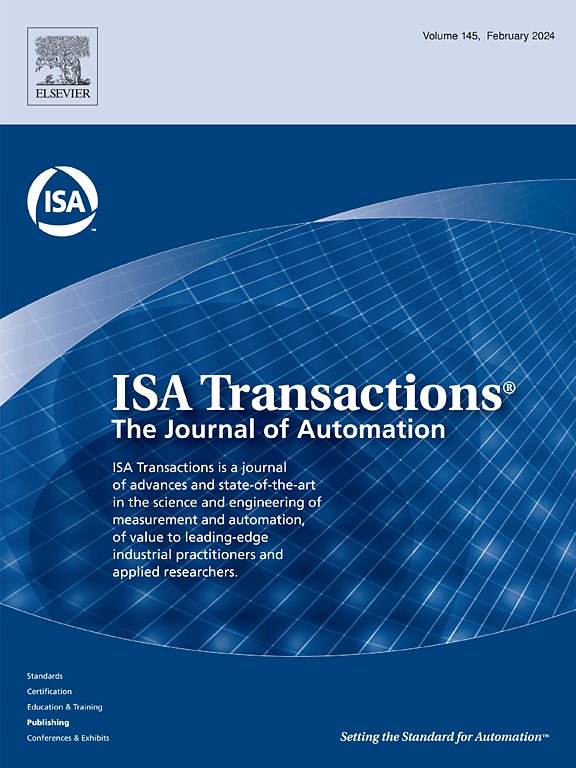Three-dimensional adaptive dynamic surface guidance law for missile with terminal angle and field-of-view constraints
IF 6.3
2区 计算机科学
Q1 AUTOMATION & CONTROL SYSTEMS
引用次数: 0
Abstract
In this paper, an adaptive dynamic surface (DSC) guidance law for missile is designed to intercept the maneuvering target with field-of-view (FOV) and terminal angle constraints in three-dimensional(3D) space, and the missile autopilot dynamics is considered. Firstly, the time-varying transformation function related to line of sight (LOS) is used to replace the FOV constraints, transforming the process-constrained control problem into the output-constrained control problem. Meanwhile, the 3D coupled relative kinematics model considering missile autopilot dynamics and maneuvering target acceleration is established. Secondly, a novel time-varying asymmetric barrier Lyapunov function (TABLF) with dead-zone characteristics is introduced to the adaptive dynamic surface guidance law design process to improve the robustness of parameter debugging. Thirdly, with the help of a nonlinear adaptive filter, the ‘explosion of complexity’ problem can be avoided effectively, which is caused by analytic computation of virtual signal derivatives. Furthermore, aiming at the problem of autopilot dynamic errors, target acceleration disturbances, and unmeasurable parameters in the model, a novel adaptive law is used to evaluate online. Then, the stability of the closed-loop system is rigorously proven using Lyapunov criteria. Ultimately, Numerical simulations with various constraints and comparison studies have been considered to show the feasibility and effectiveness of the proposed missile guidance law.
具有终端角和视场约束条件的导弹三维自适应动态表面制导法。
本文设计了一种导弹自适应动态表面(DSC)制导法则,用于在三维(3D)空间拦截具有视场(FOV)和终端角约束的机动目标,并考虑了导弹自动驾驶仪动力学问题。首先,利用与视线(LOS)相关的时变变换函数替代视场约束,将过程约束控制问题转化为输出约束控制问题。同时,建立了考虑导弹自动驾驶仪动力学和机动目标加速度的三维耦合相对运动学模型。其次,在自适应动态表面制导规律设计过程中引入了具有死区特性的新型时变非对称壁垒李亚普诺夫函数(TABLF),以提高参数调试的鲁棒性。第三,借助非线性自适应滤波器,有效避免了虚拟信号导数解析计算带来的 "复杂性爆炸 "问题。此外,针对模型中存在的自动驾驶动态误差、目标加速度干扰和不可测参数等问题,采用了新颖的自适应法则进行在线评估。然后,利用 Lyapunov 准则严格证明了闭环系统的稳定性。最后,考虑了各种约束条件下的数值模拟和对比研究,以显示所提出的导弹制导法则的可行性和有效性。
本文章由计算机程序翻译,如有差异,请以英文原文为准。
求助全文
约1分钟内获得全文
求助全文
来源期刊

ISA transactions
工程技术-工程:综合
CiteScore
11.70
自引率
12.30%
发文量
824
审稿时长
4.4 months
期刊介绍:
ISA Transactions serves as a platform for showcasing advancements in measurement and automation, catering to both industrial practitioners and applied researchers. It covers a wide array of topics within measurement, including sensors, signal processing, data analysis, and fault detection, supported by techniques such as artificial intelligence and communication systems. Automation topics encompass control strategies, modelling, system reliability, and maintenance, alongside optimization and human-machine interaction. The journal targets research and development professionals in control systems, process instrumentation, and automation from academia and industry.
 求助内容:
求助内容: 应助结果提醒方式:
应助结果提醒方式:


